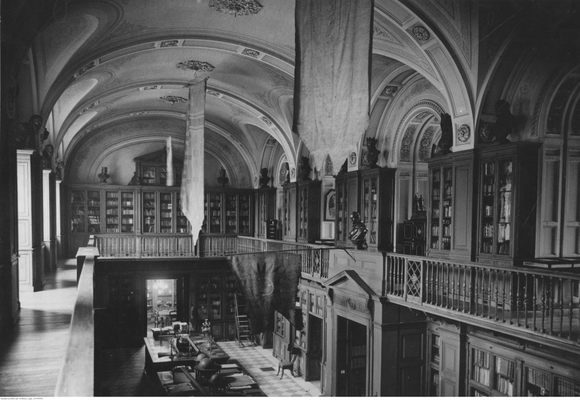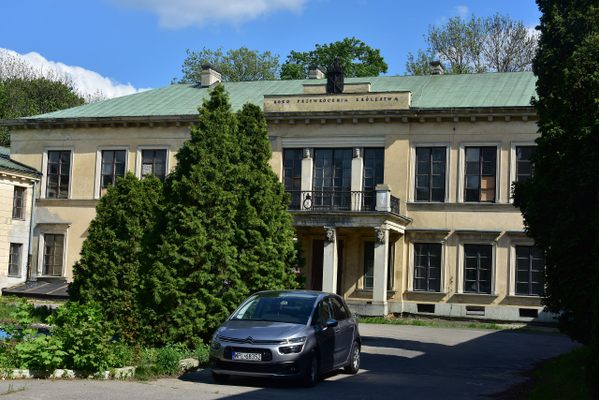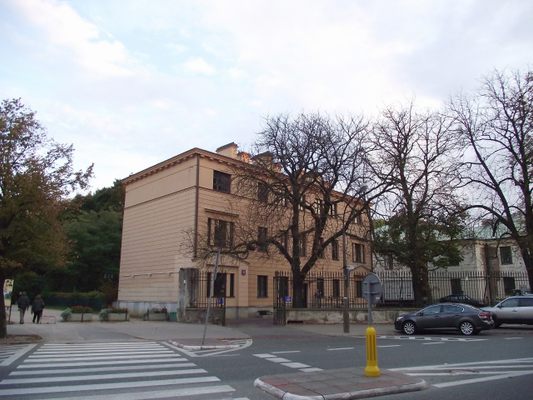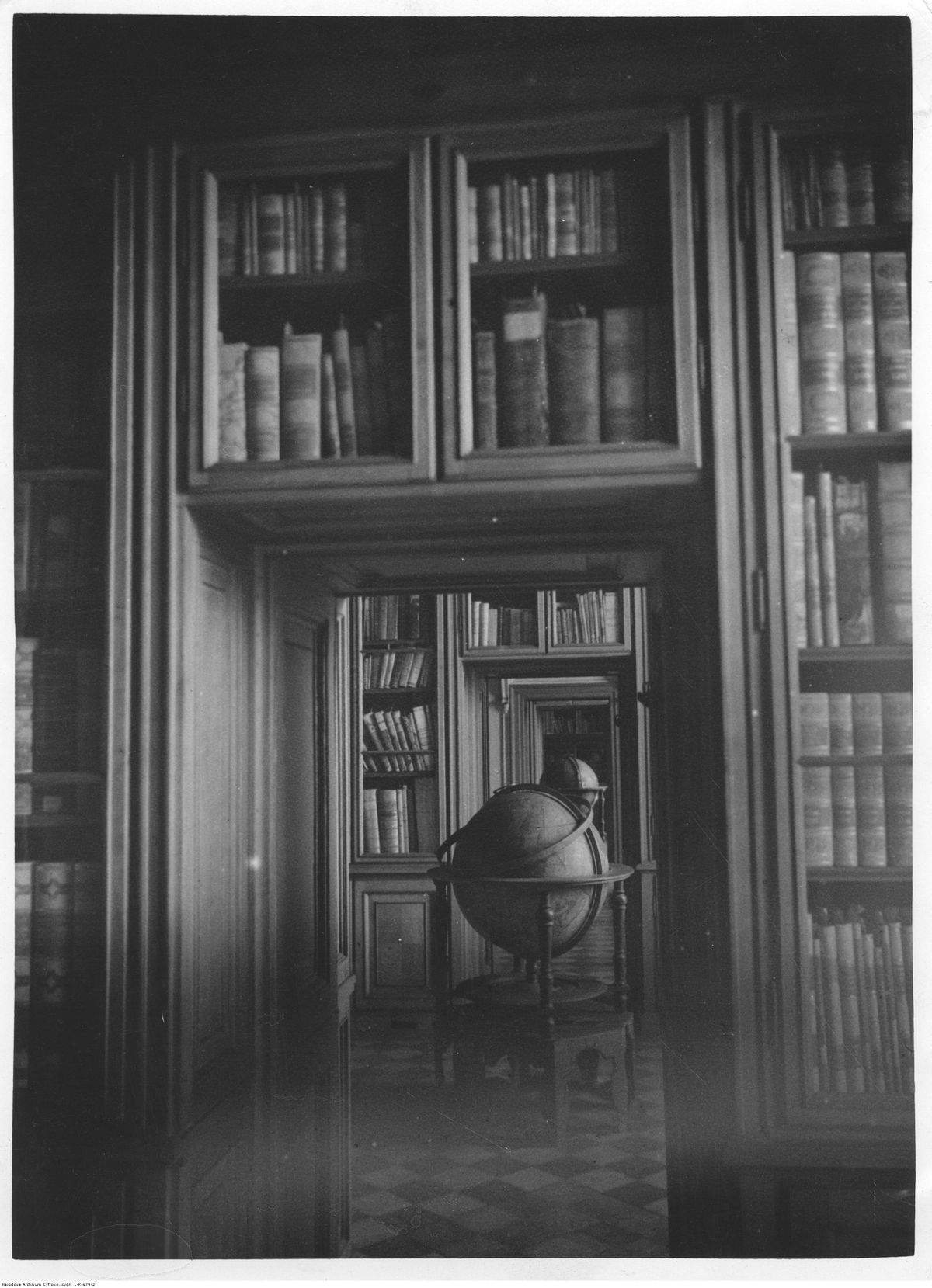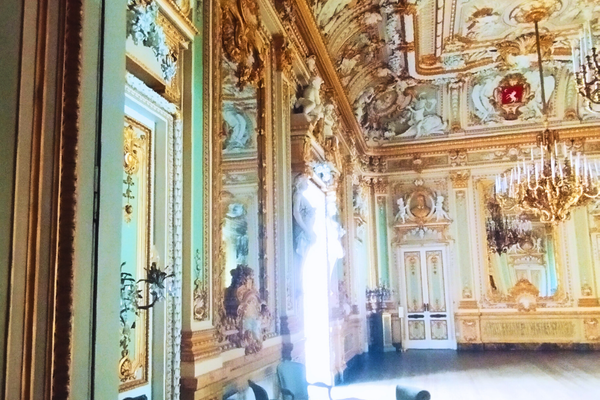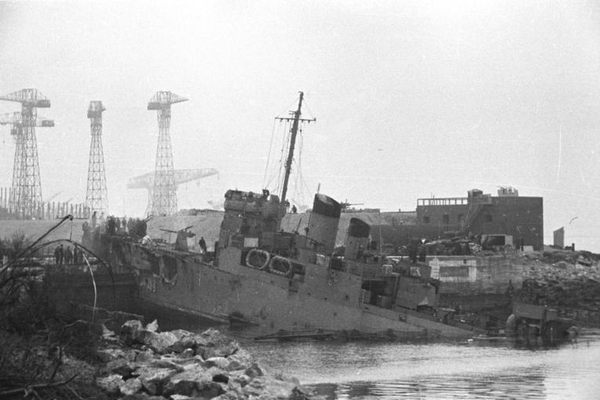About
The Blue Palace, on 37 Senatorska Street, was owned by the Zamoyski Family Fee Tail, the estate of the richest noble family in Poland. Influential in politics and culture for several centuries, the Zamoyski family once had the largest estate in the Second Polish Republic. By the outbreak of World War II, its area covered 56,199 hectares, with brickyards, sawmills, a brewery, and a sugar refinery. The family also had a number of historic properties in Warsaw.
The Blue Palace, named for the color of its roof, was also home to the family’s library and archives. It first belonged to Orzelska the Duchess of Holstein, the daughter of King Augustus II of Poland. By 1811 it had passed into the hands of Count Stanisław Kostka Zamoyski, who had the palace redone in a Classical style. By the 1930s, the palace was home to part of the family’s large and impressive art collection, as well as the Zamoyski library. Opened in 1804, it was one of the oldest private libraries in Poland. By 1939, the library held some 250,000 volumes. The art collection included portraits by many famous painters, objects from the history of the Zamoyski family as well as a number of past Polish kings. It also included an assortment of pottery, antique gems, medals, prints, and coins.
With the advent of the September Campaign in 1939, Nazi forces entered Poland and invaded within six days. Part of the siege of Warsaw by Nazi and Soviet forces was the aerial bombardment of the city by the German Luftwaffe, which resulted in a huge loss of Warsaw’s buildings. Among these was the Blue Palace—18 rooms and their contents were completely destroyed. They contained 1,500 manuscripts, 70,000 prints, a collection of calendars, Polish and foreign editions on heraldry, papers, and periodicals. Later that winter, Nazi officials entered the building and confiscated 100 manuscripts from across the world, as well as prints and engravings. Another group of Germans entered around the same time and removed 50 manuscripts from the Middle Ages.
Further damage to the Blue Palace was done during the fighting of the Warsaw Uprising some years later, in 1944. The property continued to be owned by the Zamoyski Family Fee Tail until 1945, when the Polish communist government instituted land reforms. The palace was rebuilt in 1949, and during the Cold War the Blue Palace became first the seat of the Society of Polish-Chinese Friendship, and then the offices of the Municipal Transport Authority.
In 2000, the Zamoyski heirs, having received the palace after the end of the Cold War, sold the property to a private businessman, but kept their claim on the garden. After the sale the palace fell into a state of disrepair. In 2018 the garden of the Blue Palace was put onto the heritage protection list by the Masovia Conservator of Historic Monuments. It was opened to the public in 1727, making it the oldest public park in the city.
Related Tags
Community Contributors
Added By
Published
March 23, 2022

